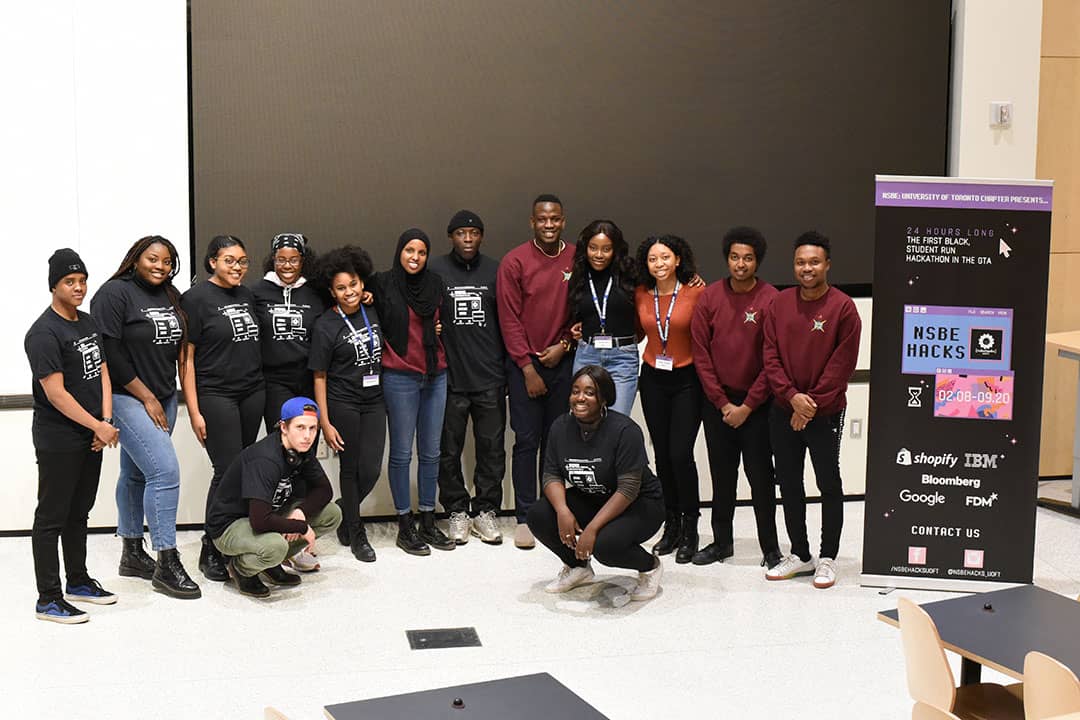Where can Black STEM students find a sense of community at the University of Toronto? This is a question that the National Society of Black Engineers (NSBE) U of T chapter sought to answer by hosting its second annual NSBEHacks hackathon from February 8–9 at the Myhal Centre for Engineering Innovation & Entrepreneurship.
The hackathon, which was a computer programming event at which teams collaborated to develop a product over the course of two days, was free for entry and welcome to people of all ethnicities and races.
Finding a community and building confidence
“What we hope the participants get out of it is a sense of inclusion and [understanding that] you’re part of a larger group,” said lead organizer Joshua Pius, a third-year computer engineering student at U of T, to The Varsity. He noted the value of students finding a sense of belonging, especially those who are underrepresented as a student group in STEM.
Idilo Abdalla, another lead organizer of the event and a third-year electrical engineering student at U of T, explained that the opportunity to develop a product can also build confidence among participants.
“We want to create an environment where people feel that they are able to actually complete a project and build something technically,” she said. “They can then leverage these skills to take to other hackathons [and] other events.”
In addition to building skills from developing their product, the hackathon also featured educational workshops for students to learn more about using services such as IBM Watson Cloud, Graph QL, and the Google Cloud Platform.
“Being the first Black student hackathon in the GTA, the purpose of NBSEHacks is to understand what people in the Black community are going through,” said Mohamed Hirole, a lead organizer and third-year electrical engineering student at U of T, to The Varsity.
“[It also creates] a safe space for them to want to feel like they can become more involved in tech.”
In conversation with Clarity, the first-place team at NSBEHacks
The first place team of NSBEHacks, Clarity, was recognized for its achievement in building a product to help people with autism learn to understand emotions through tone.
The team was comprised of Brian Nguyen, a grade 12 high school student at Weston Collegiate Institute; Huzaifa Ahmad, a second-year computer engineering student at Western University; Tarela Okoronkwo, a second-year chemical engineering student at Waterloo University; and Aman Puranik, a second-year student in biotechnology and economics at Waterloo.
“[People with autism] sometimes have trouble registering and understanding emotions through tone, voice, and facial expression,” said Okoronkwo to The Varsity.
“So our app took speech, converted it to text, and reading that text, it was able to output an emotion associated with what was said.” The product uses text-to-speech software to convert the audio into text, and then, using International Business Machines technology, analyzes that text for tone, emotion, and sentiment for the user.
It shows the user a colour, which is dependent on audio’s sentiment, to help them learn to associate speech with different emotions.
Nguyen said to The Varsity that the software could find applications in schools. “A lot of kids learn… social skills at a very young age,” he said. “Being able to implement this technology while kids are [often] socializing and still very young… helps them develop those social skills [in an important time for growth and development].”
Clarity hopes to further develop the app by potentially implementing facial recognition software based on Microsoft technology, which could help students learn to interpret facial expressions in conjunction with the software’s speech analysis.


